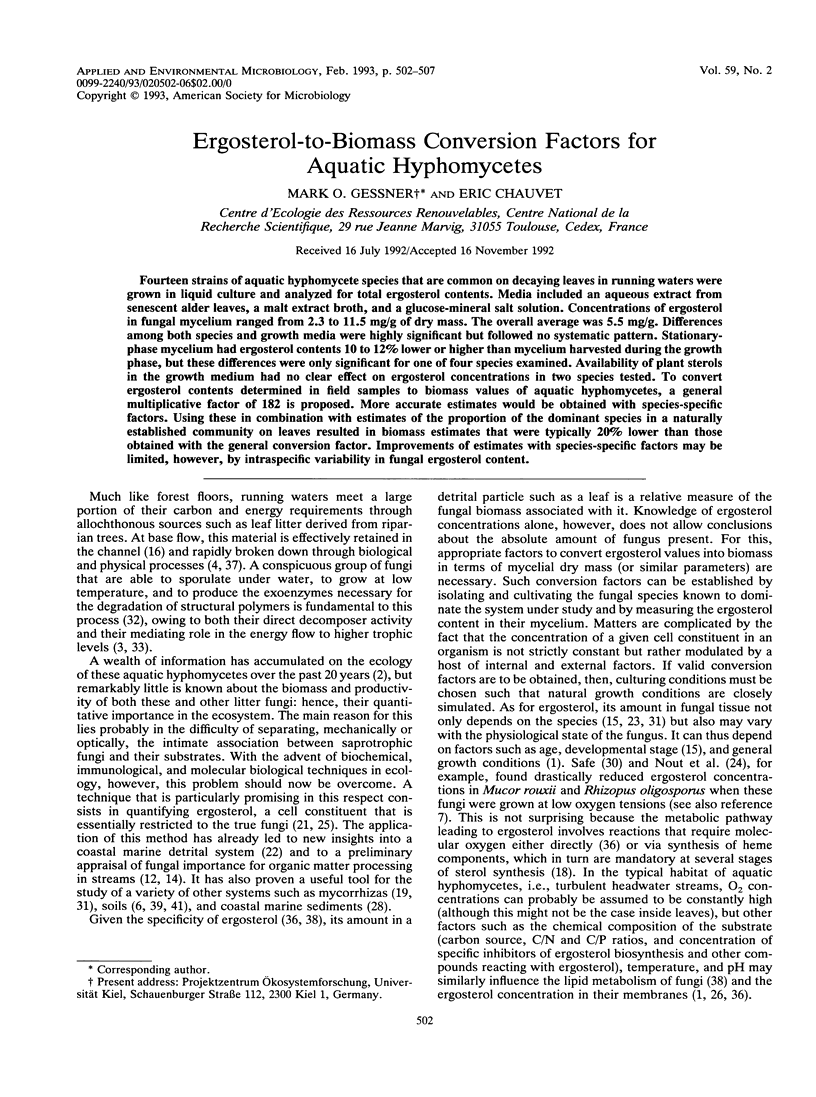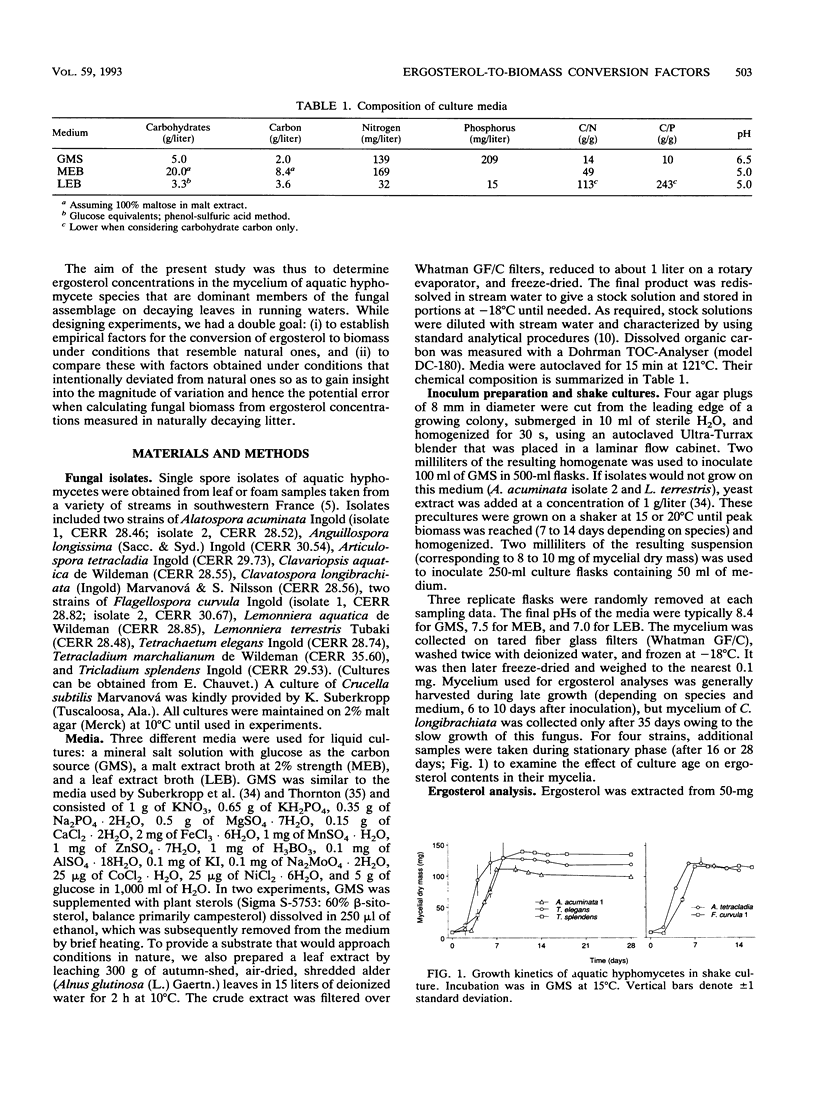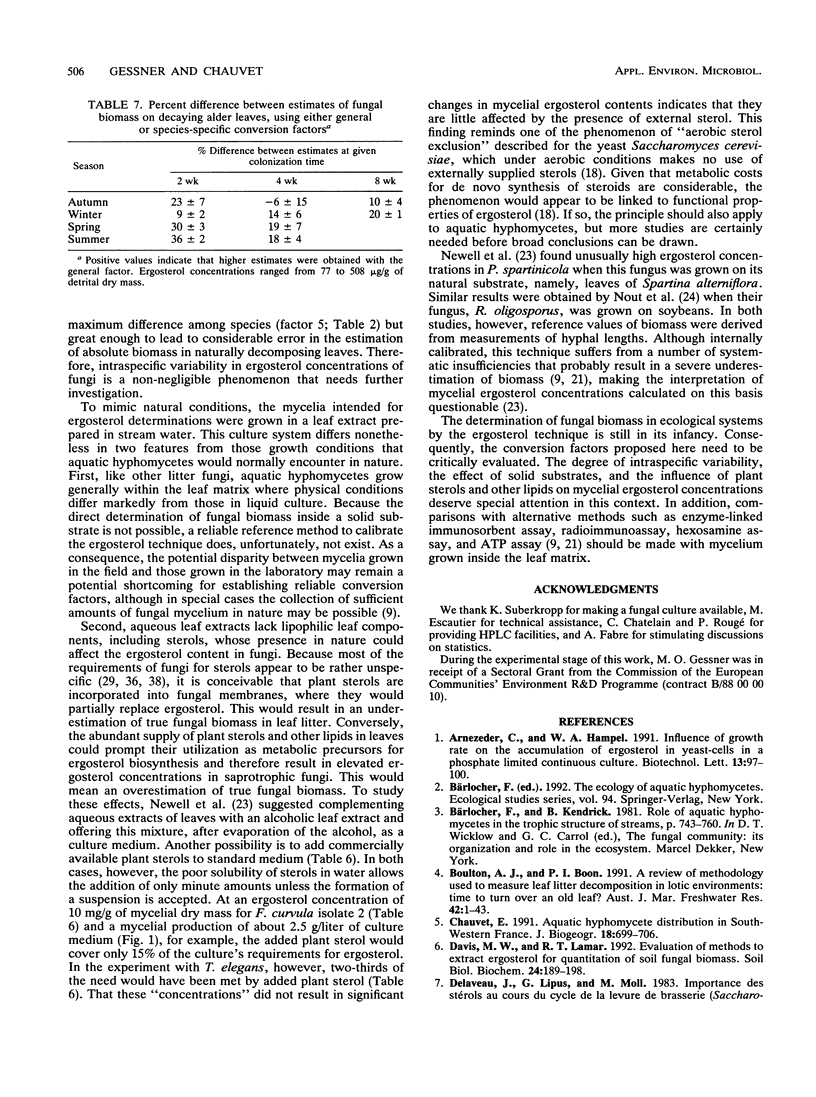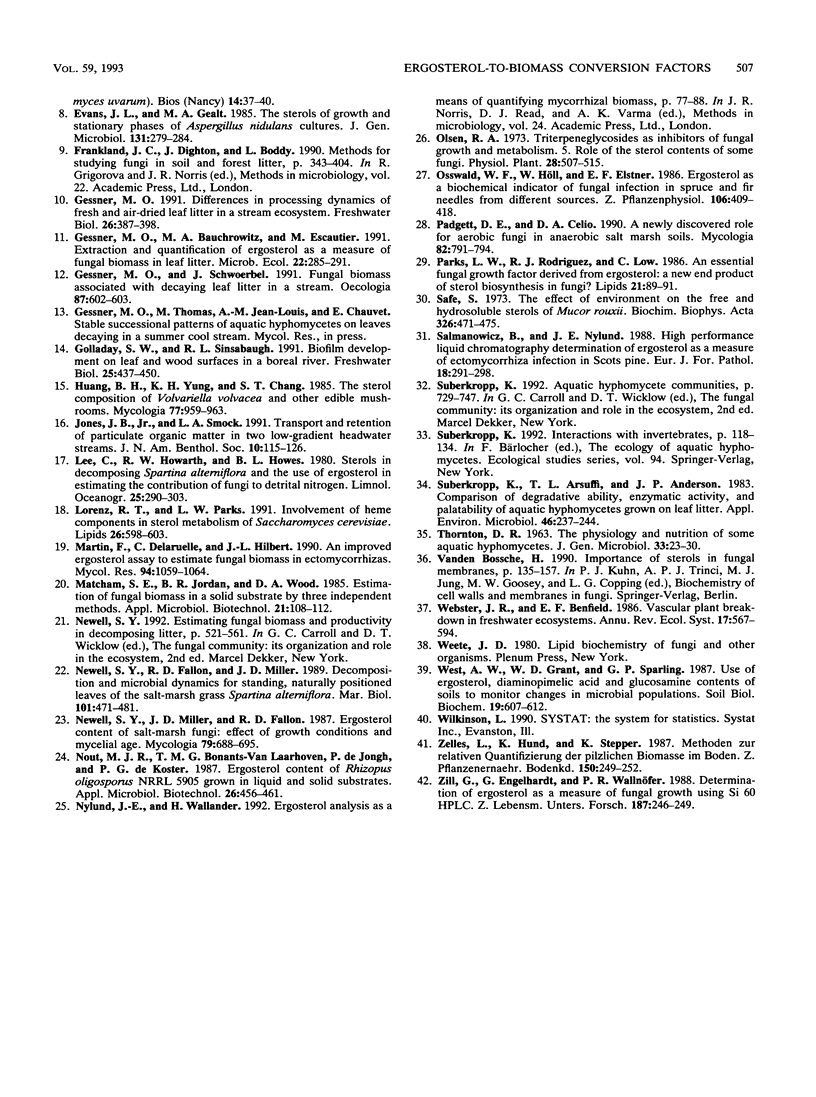Abstract
Fourteen strains of aquatic hyphomycete species that are common on decaying leaves in running waters were grown in liquid culture and analyzed for total ergosterol contents. Media included an aqueous extract from senescent alder leaves, a malt extract broth, and a glucose-mineral salt solution. Concentrations of ergosterol in fungal mycelium ranged from 2.3 to 11.5 mg/g of dry mass. The overall average was 5.5 mg/g. Differences among both species and growth media were highly significant but followed no systematic pattern. Stationary-phase mycelium had ergosterol contents 10 to 12% lower or higher than mycelium harvested during the growth phase, but these differences were only significant for one of four species examined. Availability of plant sterols in the growth medium had no clear effect on ergosterol concentrations in two species tested. To convert ergosterol contents determined in field samples to biomass values of aquatic hyphomycetes, a general multiplicative factor of 182 is proposed. More accurate estimates would be obtained with species-specific factors. Using these in combination with estimates of the proportion of the dominant species in a naturally established community on leaves resulted in biomass estimates that were typically 20% lower than those obtained with the general conversion factor. Improvements of estimates with species-specific factors may be limited, however, by intraspecific variability in fungal ergosterol content.
Full text
PDF





Selected References
These references are in PubMed. This may not be the complete list of references from this article.
- Evans J. L., Gealt M. A. The sterols of growth and stationary phases of Aspergillus nidulans cultures. J Gen Microbiol. 1985 Feb;131(2):279–284. doi: 10.1099/00221287-131-2-279. [DOI] [PubMed] [Google Scholar]
- Lorenz R. T., Parks L. W. Involvement of heme components in sterol metabolism of Saccharomyces cerevisiae. Lipids. 1991 Aug;26(8):598–603. doi: 10.1007/BF02536423. [DOI] [PubMed] [Google Scholar]
- Parks L. W., Rodriguez R. J., Low C. An essential fungal growth factor derived from ergosterol: a new end product of sterol biosynthesis in fungi? Lipids. 1986 Jan;21(1):89–91. doi: 10.1007/BF02534308. [DOI] [PubMed] [Google Scholar]
- Safe S. The effect of environment on the free and hydrosoluble sterols of Mucor rouxii. Biochim Biophys Acta. 1973 Dec 20;326(3):471–475. doi: 10.1016/0005-2760(73)90147-1. [DOI] [PubMed] [Google Scholar]
- Suberkropp K., Arsuffi T. L., Anderson J. P. Comparison of degradative ability, enzymatic activity, and palatability of aquatic hyphomycetes grown on leaf litter. Appl Environ Microbiol. 1983 Jul;46(1):237–244. doi: 10.1128/aem.46.1.237-244.1983. [DOI] [PMC free article] [PubMed] [Google Scholar]
- THORNTON D. R. THE PHYSIOLOGY AND NUTRITION OF SOME AQUATIC HYPHOMYCETES. J Gen Microbiol. 1963 Oct;33:23–31. doi: 10.1099/00221287-33-1-23. [DOI] [PubMed] [Google Scholar]
- Zill G., Engelhardt G., Wallnöfer P. R. Determination of ergosterol as a measure of fungal growth using Si 60 HPLC. Z Lebensm Unters Forsch. 1988 Sep;187(3):246–249. doi: 10.1007/BF01043348. [DOI] [PubMed] [Google Scholar]


